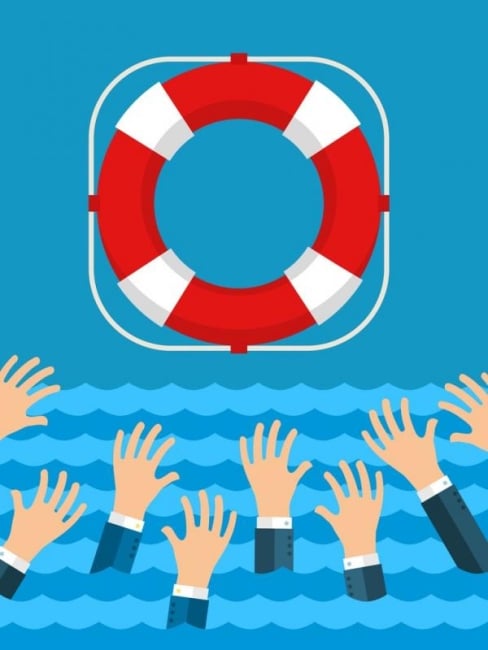You have /5 articles left.
Sign up for a free account or log in.

Istockphoto.com/VectorStory
For most college faculty, distance learning is now in full swing. We are beginning to adjust to new platforms, new routines and new normals. We are also fortunate to be among those working safely from home during the COVID-19 pandemic -- but our students may not be in the same position. Communicating compassionately with students is vital to determining how they are doing right now and trying to assist them in ways that address not just academic issues but also financial, health and safety concerns as well as their overall well-being.
What are some of the ways we can show compassion to our students in the midst of a public health crisis? Beyond sharing information about courses, class sessions and assignments, what other forms of communication can we initiate with and among students to help them during this challenging time?
Ask students how they are doing. Not every communication has to address academic issues. I have started sending students weekly emails asking how they are doing and making clear that I am genuinely interested in their responses. I do this in part because I’ve noticed that students often begin emails by apologizing: “I’m so sorry this essay is late, but my grandmother has just been diagnosed with COVID-19.” Or “I apologize for missing this week’s work, but I’ve been working extra janitorial shifts at the hospital.”
Students should not feel the need to apologize to their professors for grappling with the crisis that has upturned many of their lives. By initiating communications with students that remind them that I care about and want to acknowledge the realities they are facing, I hope to convey to them that they needn’t ever apologize for or be hesitant to communicate with me about what they are dealing with beyond academic contexts.
Support students’ nonacademic needs. I recently put together an emergency guide for students with information about unemployment benefits, health insurance, food pantries, mental health counseling, industry-specific relief funds, childcare for essential employees and accessing the latest updates about COVID-19 in our area. In doing so, I wanted to inform students about important resources that may be useful to them. But I also wanted to emphasize that conversations about health, safety and self-care have as much of a place in the COVID-19 classroom as do academic discussions. By making nonacademic concerns part of the classroom context, we make it easier for students to ask for help or share concerns about nonacademic issues should they wish to do so.
Offer students a space to discuss nonacademic topics. While it’s important to help students feel comfortable communicating with professors about their nonacademic concerns, we should also recognize that students may not always wish to talk to us about these sorts of things. Sometimes talking to classmates can feel easier or more comfortable, which is why it can be helpful to create a virtual space, such as a student-to-student discussion forum, where students can share and discuss nonacademic concerns with one another.
In the forums I’ve created for my own students, students can ask and answer questions like, “Does anyone know of a relief fund for New York City bartenders?” Or “Can anyone recommend a food pantry in my neighborhood that has infant formula?” Having forums like these creates a greater sense of community and allows the virtual classroom to function as a support system -- not just for academic concerns, but for other, arguably more urgent, questions and topics students want and need to talk about.
Create a space for students to unwind. Encourage students to attend to their mental health and emotional well-being by refocusing, relaxing and trying to find small moments of joy. Consider sharing with students the abundance of free resources for self-care and pleasure that are out there right now -- everything from exercise and meditation classes to virtual museum and gallery tours to livestreams of concerts, theater and operatic performances. You might create a space for students to find links to various such resources and even consider offering extra credit to students who choose to write a short response piece about an experience or event in which they participated.
Trust your students. Some students may ask for extensions or flexibility with their coursework without offering an explanation for why this is necessary. Remember that students may have situations impacting their academic performance that they are uncomfortable or even fearful of discussing with professors or classmates. Choose to trust them rather than expecting or requiring an explanation from them. Believe that whatever it is they are juggling is more than enough to warrant the extension or adjustment they are requesting. Be compassionate.
If there is one thing I have been learning throughout the COVID-19 pandemic, it is that while all of us are affected by it, the specific ways in which each of us is impacted are not always apparent to or well understood by others. Compassion facilitates trust, understanding and communication between faculty members and students, and these can be critical not only to students’ academic success but also to their overall well-being during this extraordinarily challenging time.




